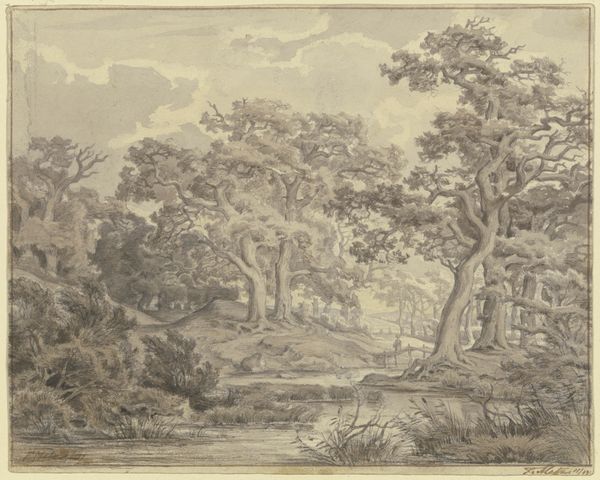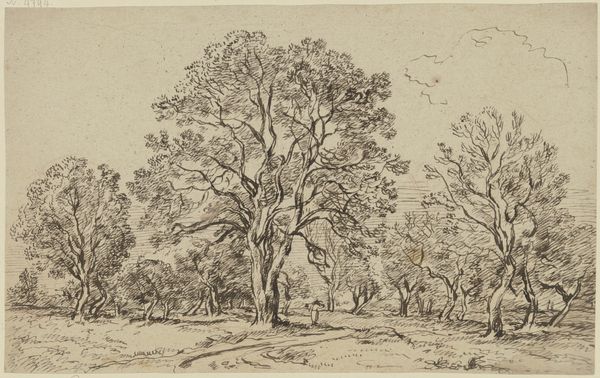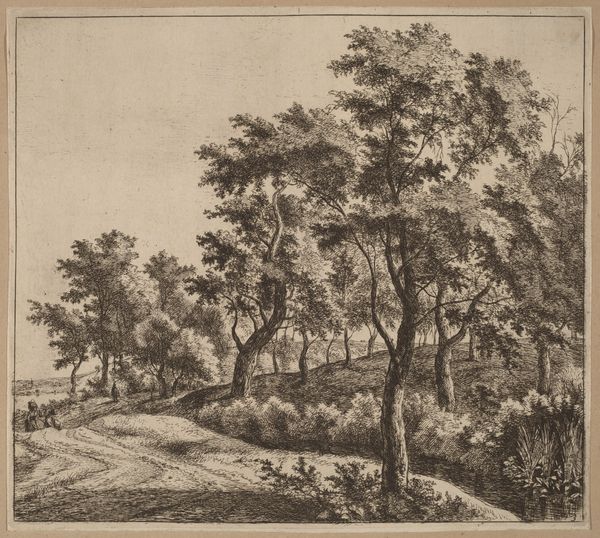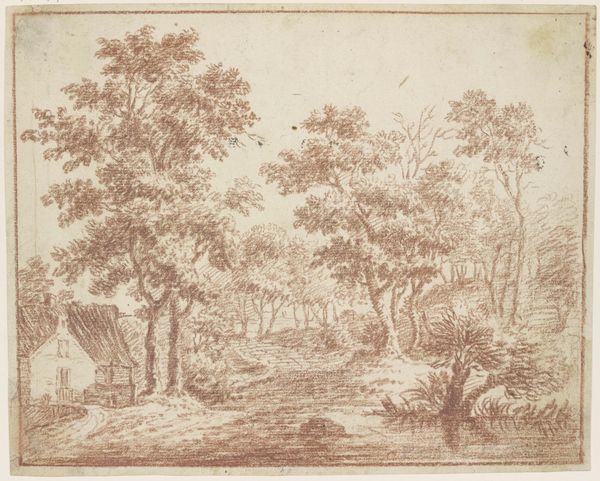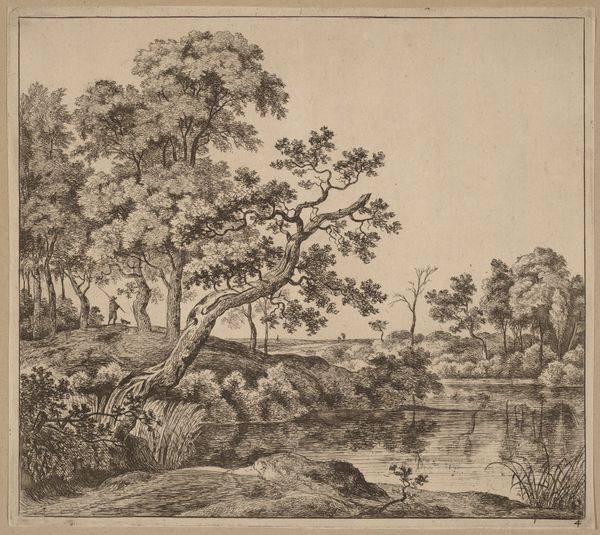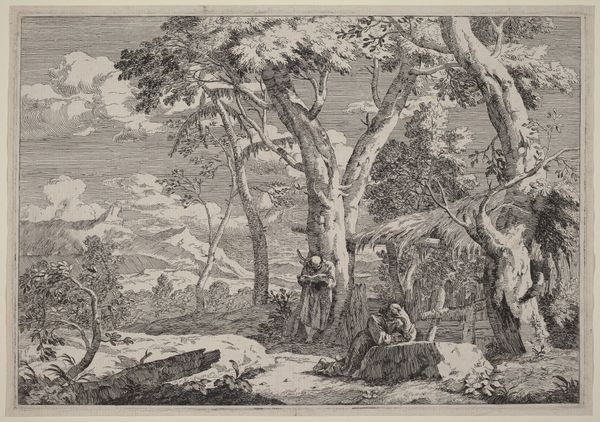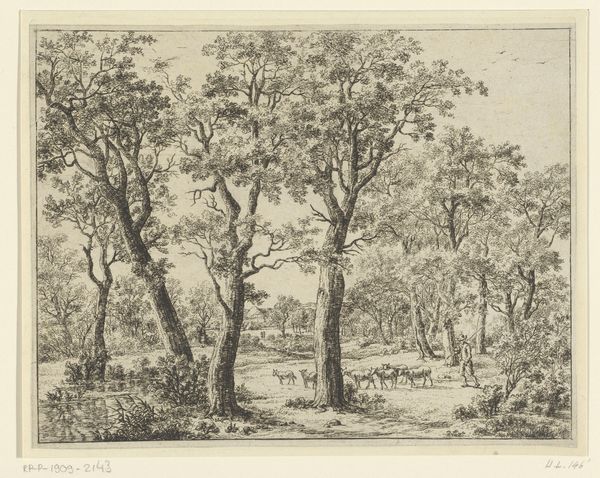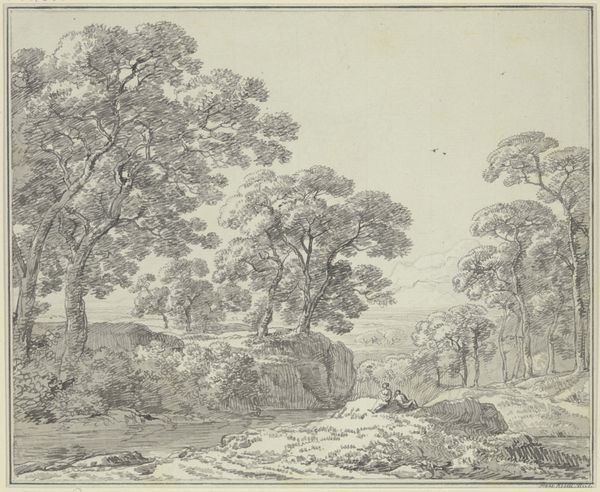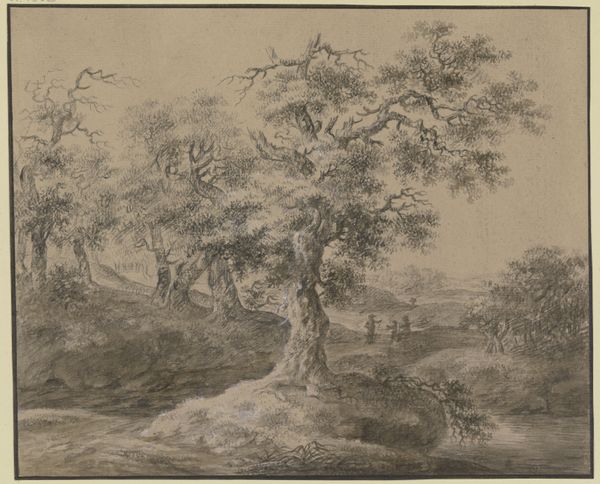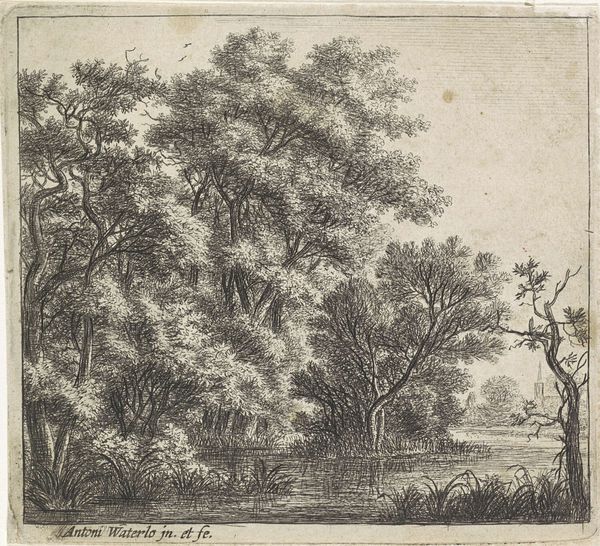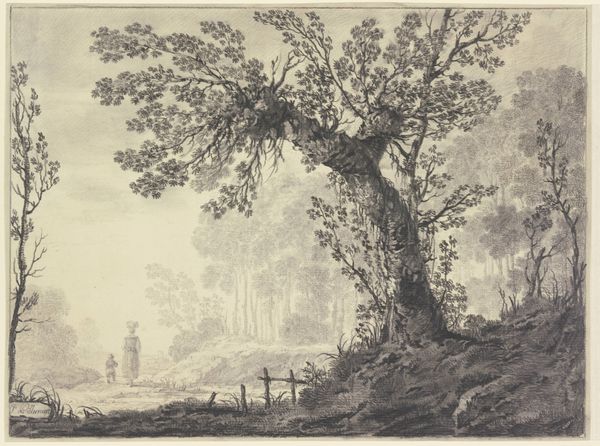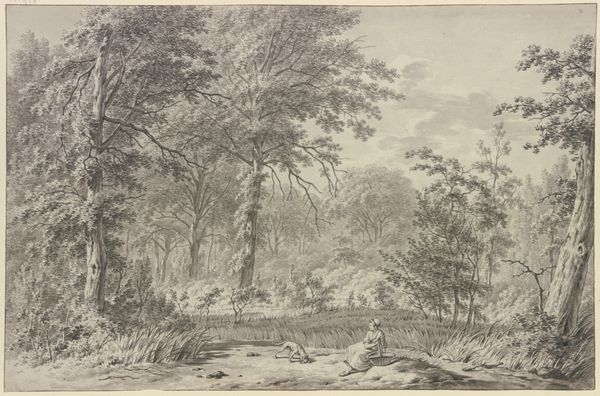
drawing, ink, pencil, chalk, graphite
#
drawing
#
baroque
#
pen sketch
#
pencil sketch
#
landscape
#
ink
#
pencil
#
chalk
#
15_18th-century
#
graphite
Copyright: Public Domain
Editor: So, this is *Waldlichtung, im Hintergrund rechts ein Dorf*, a drawing by Friedrich Wilhelm Hirt. The museum records don't provide an exact date. It's done in ink, pencil, and chalk. What strikes me is how peaceful the landscape feels, despite being a somewhat somber monochromatic drawing. How do you interpret the relationship between the artist, this scene, and perhaps, his patron or audience? Curator: That’s a great starting point. This drawing, like many landscapes of the 18th century, reflects a growing interest in the natural world, fueled by scientific exploration and philosophical shifts. But who was the intended audience for such works? Were they merely aesthetic exercises, or did they carry deeper social implications? Editor: What social implications might a seemingly simple landscape drawing hold? Curator: Well, think about it: depicting the land is often about possession and control. Landscapes during this period often served as status symbols for the aristocracy, visually asserting their dominance over their estates. How might Hirt's choice of a more humble village scene subvert or comment on that trend? Do you see any indicators of such hierarchies within the piece? Editor: I hadn't considered that. It is interesting that the village is clearly subordinate to the forest and stream; human endeavors almost swallowed up by nature. Maybe it's a comment on the temporary nature of human influence? Curator: Precisely. Or perhaps it subtly reinforces the traditional social order while also appealing to a new sensibility, a romantic ideal of rustic life. Artists, after all, need patrons. Hirt had to balance social commentary with the desires and expectations of his commissioners, shaping the public reception of these images in a complicated dance. Editor: So, this seemingly idyllic landscape becomes a reflection of the power dynamics and cultural values of the time. Curator: Indeed. Even something as seemingly straightforward as a drawing of trees and a village carries a weight of history and social positioning. Thank you for that keen observation.
Comments
No comments
Be the first to comment and join the conversation on the ultimate creative platform.

